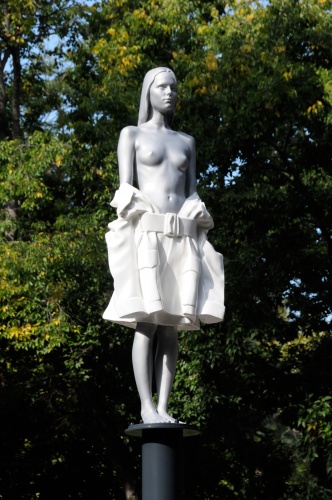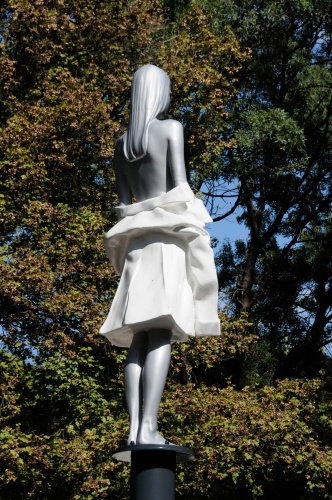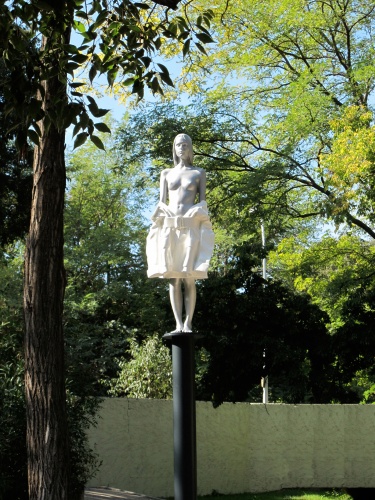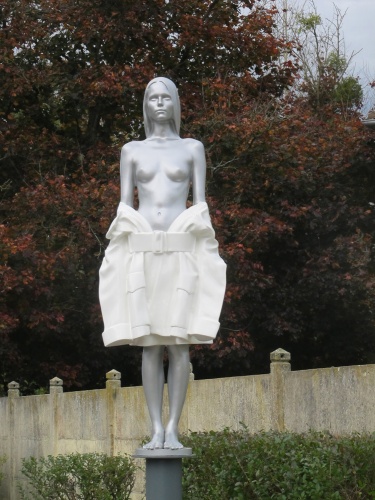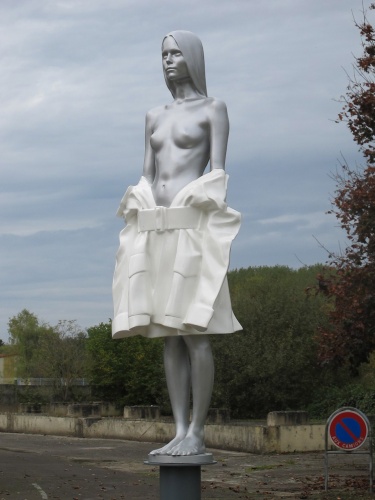Gyptis - Spirits of the Huveaune
Date:
2013
Ref:
7001
Materials:
Aluminium, polychrome
Dimensions:
50 x 50 x 110cm, on plinth column 100cm high (3 + 2AP)
Exhibition history:
Parc du vieux Moulin Marseille, France & Studio Orta Les Moulins, France
Courtesy:
© Lucy + Jorge Orta. Nouveaux Commanditaires, Bureau de Competences and Rives & Cultures Marseille
The Spirits of the Huveaune, Le chemin des fées, is a parcours of five public sculptures –spirits– that map the presence of the Huveaune, a coastal river in eastern Provence that originates in the massif of Sainte Baume and flows into the Mediterranean Sea at the port of Marseille. These spirits, genii loci, invest five locations along the riverbanks and weave an unprecedented link between the past and the present. They invite visitors to discover a 30km trail along the Huveaune valley and new ways to explore the river. Drawings from historical texts, legends and stories surounding the foundation of Marsillia, the ancient port of Marseille the myths recount the strong feminine presence associated with the valley. Spirits of the Huveaune also refer to the universal water cycle and raise public awareness of environmental issues related to the river’s fate, questioning water management in the future, here as elsewhere.
Legend recalls that when choosing her husband, the Ligurian princess Gyptis offered water (as was the custom) to the Greek navigator Protis. From their union Marseille was born. The figure of Gyptis symbolises the opening of the city to the Mediterranean and beyond, to other horizons, peoples and cultures. Lucy + Jorge Orta have imagined Gyptis as the spirit of Marseille’s ancient water mill, imperturbable and serene, who awaits the encounter. Ambassador of nature, she prepares to receive her guests. In the water cycle, Gyptis refers to the condensation stage, where water vapour transforms into dew. She embodies unity and fraternity.
Gyptis, La fée du vieux moulin was inaugurated on October 13, 2012 in the Parc du vieux Moulin, Marseille for the Fete de l’Huveaune.
